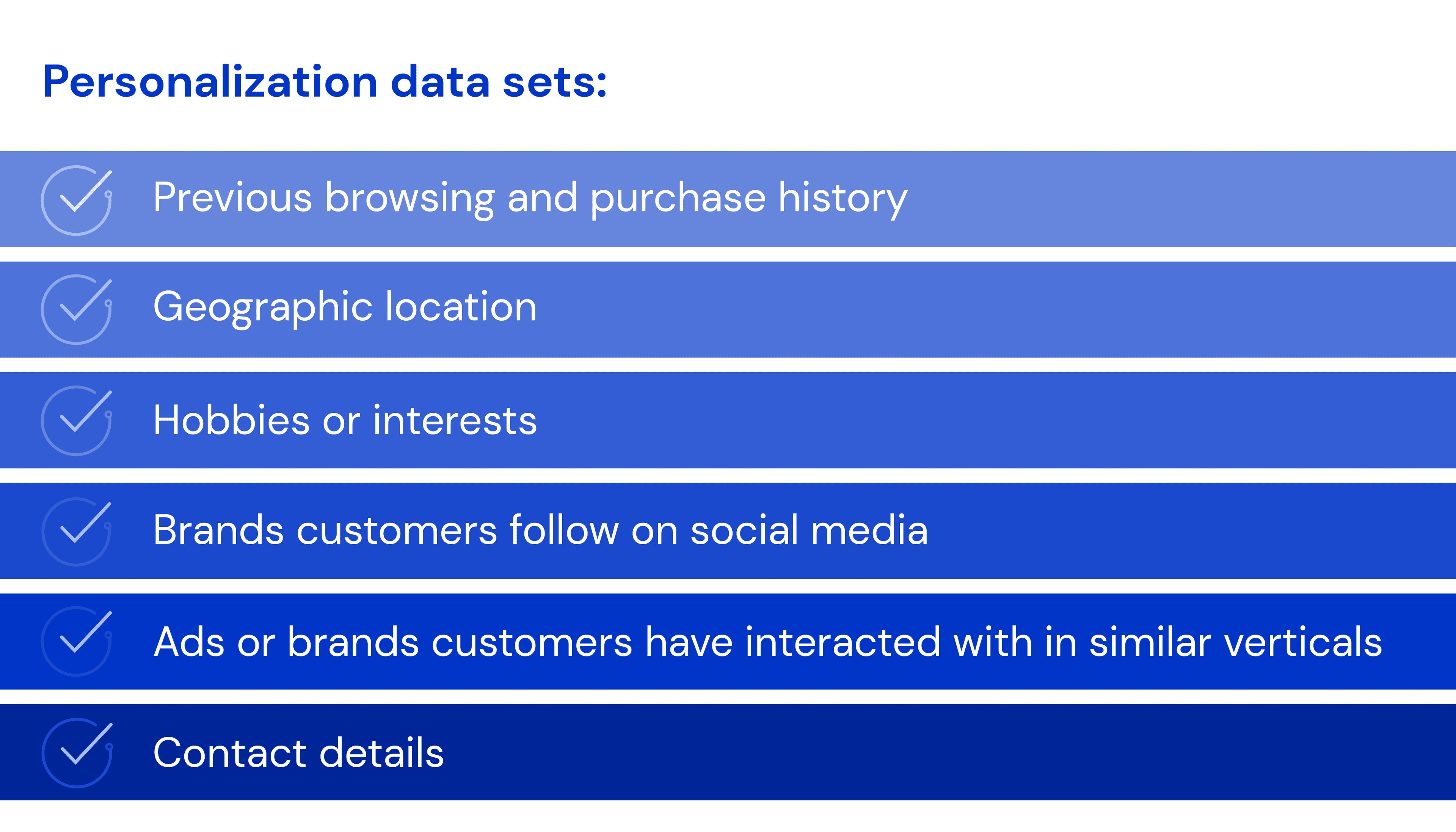Boost sales and win customer loyalty through e-commerce personalization
Boost sales and win customer loyalty through e-commerce personalization
What is e-commerce personalization?
- Suggest products to customers based on the trends in their previous buying behavior.
- Show customers brands and products that align with environmental factors: location, weather, etc.
- Pinpoint shopping patterns and build “look-alike audiences” in the form of buyer types by studying customers’ purchase behaviors.
- Highlight customers’ favorite brands or categories based on previous browsing practices.

- Previous browsing and purchase history
- Geographic location
- Hobbies or interests
- Brands customers follow on social media
- Ads or brands customers have interacted with in similar verticals
- Contact details
How does personalization propel e-commerce?

- Robust customer experience. Taking advantage of personalization to help customers quickly find what they need enhances customer satisfaction, lending more value to your brand in your customers’ eyes.
- Increase in sales and conversions. Personalized experiences based on customer behavior and interests attract attention fast, let alone saving shoppers time and energy in making procurement decisions and upping the chance of purchases from your store.
- Larger orders. Through personalization, you can upsell or recommend other merchandise at critical points of the shopping journey. For example, if someone buys a tablet, you can suggest peripherals like a carrying case, keyboard attachment, etc., before check-out. Oftentimes, customers would add those value-add items to the cart, and you’ll have sold more products.
- Stronger customer loyalty. E-commerce personalization done through an examination of customers’ past behavior makes people feel heard and understood, confident that you can repeatedly offer them exactly what they want. Accordingly, you win their loyalty, and they’ll keep buying from you.
- More site visitors. Presenting an experience geared to customer interests motivates those shoppers to return and interact with your brand, assured that they need not wade through countless pages to find what they’re after. That uptick in engagement will invariably boost the ROI on your marketing dollars.
What mistakes to avoid and approaches to take during implementation?
Common pitfalls
- Collecting too much data and overwhelming internal teams.
- Failing to maintain consistency across channels.
- Struggling to catch up with the numerous content variants for testing and customization.
- Lacking enough traffic volume to establish trends or secure clear results.
Best practices
- Gather key data from multiple sources: browsing activity, network information, customer-specific details.
- Review the content-production process for opportunities for content reuse. You can often implement personalization by repurposing existing content in the right visitor context.
- Devise a personalization strategy for suppressing irrelevant content or CTAs to raise customer satisfaction. For example, do not ask customers to sign up for a credit card that’s already in their wallet.
- Survey your sales and support leaders for opportunities and friction points. Frequently, your internal SMEs are familiar with the fastest wins from personalization.
What are the key considerations of personalization and customization in e-commerce?
- Privacy is becoming more critical to online shoppers. And, with the migration toward a cookieless internet, brands must figure out how to collect the data they need for personalizing experiences—all while respecting shoppers’ privacy.
- Personalization efforts must synchronize with your brand values and messaging. Just because you can do something doesn’t mean you should. Before launching retargeting, split testing, or dynamic content, perform a “gut check” of your strategy and answer these two questions:
- Does what you’re doing reflect your corporate values?
- Does your organization feel good about it?
- Your team must track the KPIs set at the start. Before evaluating your personalization strategy for improvement, assess the feature’s performance. Ensure that everyone is on the same page with KPI tracking and the measurement of success for a particular campaign.
How does Uniform personalize customer experiences?
- Uniform integrates speedily and seamlessly with market-leading headless CMSes, including Contentful, Contentstack, Kontent.ai, and Sanity.
- Since Uniform connects other headless CMSes or commerce platforms through its own interface, you can combine personalized content sources for optimal benefit.
- With Uniform, you can connect with other information sources in real time to harness content for your personalization strategy. Examples of those sources are GeoIP data from the hosting provider, Uniform's visitor-behavior signals, and ABM information providers.
- By connecting Uniform personalization to your CDP, you can create personalization rules based on customer data, e.g., show customers who bought formal menswear before product pages for ties instead of Hawaiian shirts and faded jeans.
- With Uniform, you deliver personalized content from the edge of leading CDNs—Akamai, Cloudflare, Netlify, Vercel—loading pages fast and avoiding the flickering of slow pages and content in traditional personalization. Uniform does not depend on third-party scripts, offering high performance and an appealing user experience.
Personalization is a multi-step process that includes capturing data points to help with categorization and segmentation and putting it into practice. It is often an evolutionary process where you start with simpler attempts and learn from the results in order to understand what additional data and content may help drive better outcomes.







.png&w=1080&q=90)
.png&w=1080&q=90)
.png&w=1080&q=90)